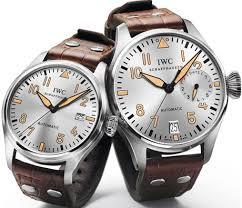Out Of Sync Watches

My watch is 1 second fast per hour and James's is 1.5 seconds slow per hour. Right now they show the same time. In how many minutes later will they show the same time again?
The answer is 1036800.
This section requires Javascript.
You are seeing this because something didn't load right. We suggest you, (a) try
refreshing the page, (b) enabling javascript if it is disabled on your browser and,
finally, (c)
loading the
non-javascript version of this page
. We're sorry about the hassle.
2 solutions
Solution 1
Every hour,watch w1 gains 1 s and watch w2 loses 1,5s so the difference between them is 2,5s.Let h2 be the hour hand of the slow watch and h1 the hour hand of the fast watch.We can assume that h2 is still and w1 counts 2.5 seconds for every real hour.Τhen,h1 has to count 12 hours,so w1 time real time 2,5s 1h 12h=43.200s t
t=43.200/2.5=17.280h=1.036.800 min (=720 days)
Solution 2
h1 and h2 will show the same time when the angle between them is 360 deg . The angular speed of a normal watch is: ω0=360 deg/12h=30 deg∕h=30/3600 deg∕s=1/120 deg∕s . Let ω1=angular speed of w1 ,ω2=angular speed of w2. Then ω1=(3601/3600) ·ω0 and ω2=(3598.5/3600) ·ω0 so relative angular speed is ω=(3601/3600) ·ω0 -(3598.5/3600) ·ω0=(2.5/3600) ·ω0= ω0/1440 .So: ω=dθ/dt ⟶dt=dθ/ω=360/( ω0/1440 )=(360∙1440)/(1/120)=62208000sec=1.036.800 min (=720 days)
Sorry, why did you pass from seconds to minutes by multiplying 60? shouldn't you divide by 60? Sorry for bad English...
Eli's solution is a little confusing because the units are missing. The watches become 2.5 seconds off per hour. They will show the same time when they become 43,200 seconds off.
Dividing the latter by the former yields 17,280 hours, which is why this number must be multiplied by 60 to get the answer in minutes.
ah man almost had the answer i forgot the hours. i did x = 3600 - 1.5x and the answer of that times 60 but it had to be x =12 * 3600 - 1.5x
Why should they show the same time again once they are 12 hours off ? Why not any other time?
Log in to reply
Because a clock does 2 full cycles for 24 hours. So one would show time a.m and other would show time p.m
Let the angular speed of my watch be ω I = 3 6 0 0 3 6 0 0 + 1 = 3 6 0 0 3 6 0 1 and that of Jame's watch ω J = 3 6 0 0 3 6 0 0 − 1 . 5 = 3 6 0 0 3 5 9 8 . 5 . The two watches first show the same time when they are 12 hours off. Let the time lapse by t . Then:
ω I t ( ω I − ω J ) t ( 3 6 0 0 3 6 0 1 − 3 6 0 0 3 5 9 8 . 5 ) t 3 6 0 0 2 . 5 t ⟹ t = ω J t + 1 2 × 3 6 0 0 = 1 2 × 3 6 0 0 = 1 2 × 3 6 0 0 = 1 2 × 3 6 0 0 = 2 . 5 1 2 × 3 6 0 0 2 s = 2 . 5 × 6 0 1 2 × 3 6 0 0 2 min. = 1 0 3 6 8 0 0 min.
Since my watch is gains 1 second per hour, and J's watch loses 2 seconds per hour, the difference between the two watches grows at (1-(-1.5)) = 2.5 seconds per hour.
Intuitively, the next time the watches will be in sync is when they are 12 hours apart (when my one will be 6 hours fast compared to the time irl, J's is 6 hours behind).
So, we want a difference of 12 hours between the watches. In seconds, 12 hours is:
12 * 60 * 60 = 43200 seconds
We know the watches grow apart at a rate of 2.5 seconds per hour, so, the next time the two watches are in sync IN HOURS is:
43200/2.5 = 17280 hours
which, in minutes, is:
17280*60 = 1036800 minutes
hope this helps. this method is the same as the top answer, but with more explanation if you needed it
Log in to reply
Yes, it is the same reasoning. I was just showing how algebra can be used to answer this type of problems.
They will show the same time again once they are 12 hours off. Since one moves fast by 1 second and the other moves slow by 1.5 seconds, the total number of seconds it will take is 1 + 1 . 5 1 2 × 6 0 × 6 0 = 1 7 2 8 0 , so it will take 1 7 2 8 0 × 6 0 = 1 0 3 6 8 0 0 minutes.